⏰ Team & Time Management
Welcome to one of the most powerful life lessons: how to manage time and people.
You can have a great idea, but without organization, it stays a dream.
In this lesson, you’ll learn how to turn chaos into teamwork — and stress into strategy.
🎬 Story: The Two Teams
Two school teams were preparing a fair.
- Team A said, “Let’s just meet tomorrow and see what happens.”
- Team B made a short plan: who brings materials, who designs posters, and when they meet again.
On the fair day, Team A ran in circles. Team B smiled — everything worked.
That’s not luck. That’s planning.
🕒 What Is Time Management?
Time management isn’t about having a fancy planner or working all day.
It’s about focus — knowing what matters most and doing that first.
There’s a difference between being busy and being productive.
| Busy | Productive |
|---|---|
| Works a lot | Finishes what matters |
| Says “yes” to everything | Chooses priorities |
| Always tired | Feels in control |
💡 The 80/20 Rule
80% of your results come from 20% of your actions.
Find the tasks that really move you forward — and focus there.

Managing time means managing energy — focus on what matters, and rest smartly.
🗂 Tools for Planning
Even simple visual tools make a big difference.
✅ Eisenhower Matrix
| Urgent | Not Urgent |
|---|---|
| Important | Do now |
| Not Important | Delegate |
Ask yourself before every task:
“Does this really move me closer to my goal?”
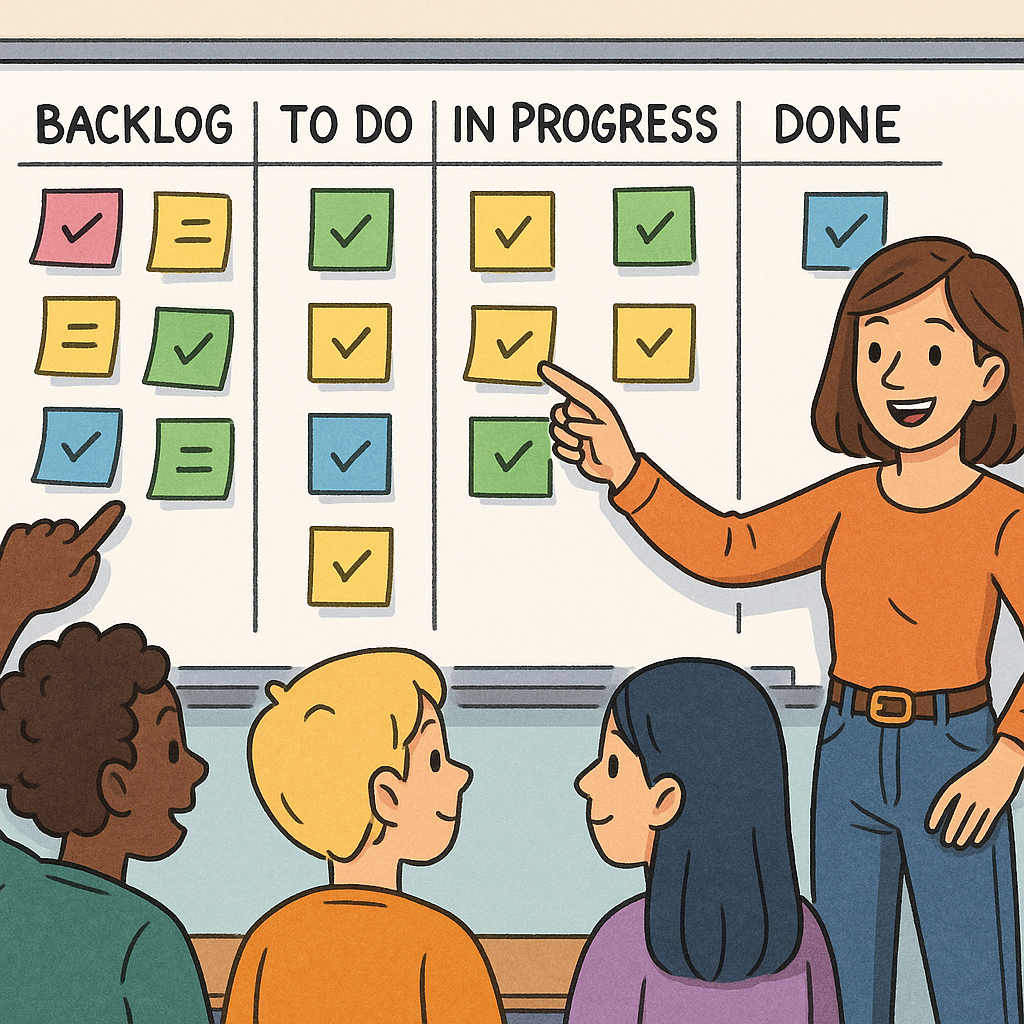
Visual boards like Kanban make teamwork clear — everyone sees what’s happening.
🎯 Setting Goals with SMART
Good goals are like GPS for your work — clear and measurable.
| Type | Example |
|---|---|
| ❌ Vague | “Finish my project soon.” |
| ✅ SMART | “Write 3 blog posts by Friday and publish one.” |
SMART means:
- Specific — clear and focused
- Measurable — you can check it
- Achievable — realistic
- Relevant — connected to your goal
- Time-bound — has a deadline
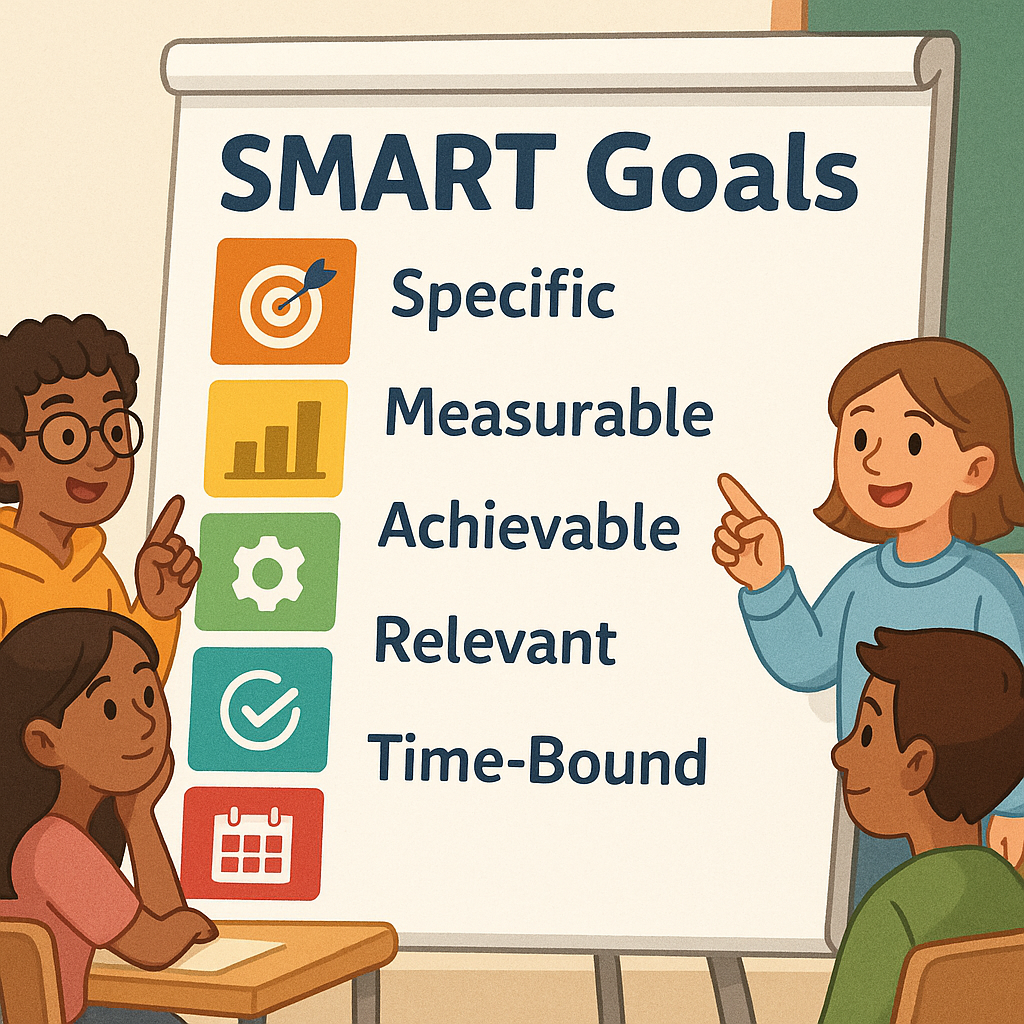
SMART goals turn big dreams into daily actions — one clear step at a time.
👥 Working in a Team
Teamwork isn’t just “sharing work” — it’s combining strengths.
Common Team Roles
| Role | Description |
|---|---|
| Leader | Keeps everyone on track |
| Organizer | Plans and follows deadlines |
| Creator | Brings new ideas |
| Motivator | Keeps team energy high |
| Checker | Ensures quality |
Good teams mix all roles — everyone matters.
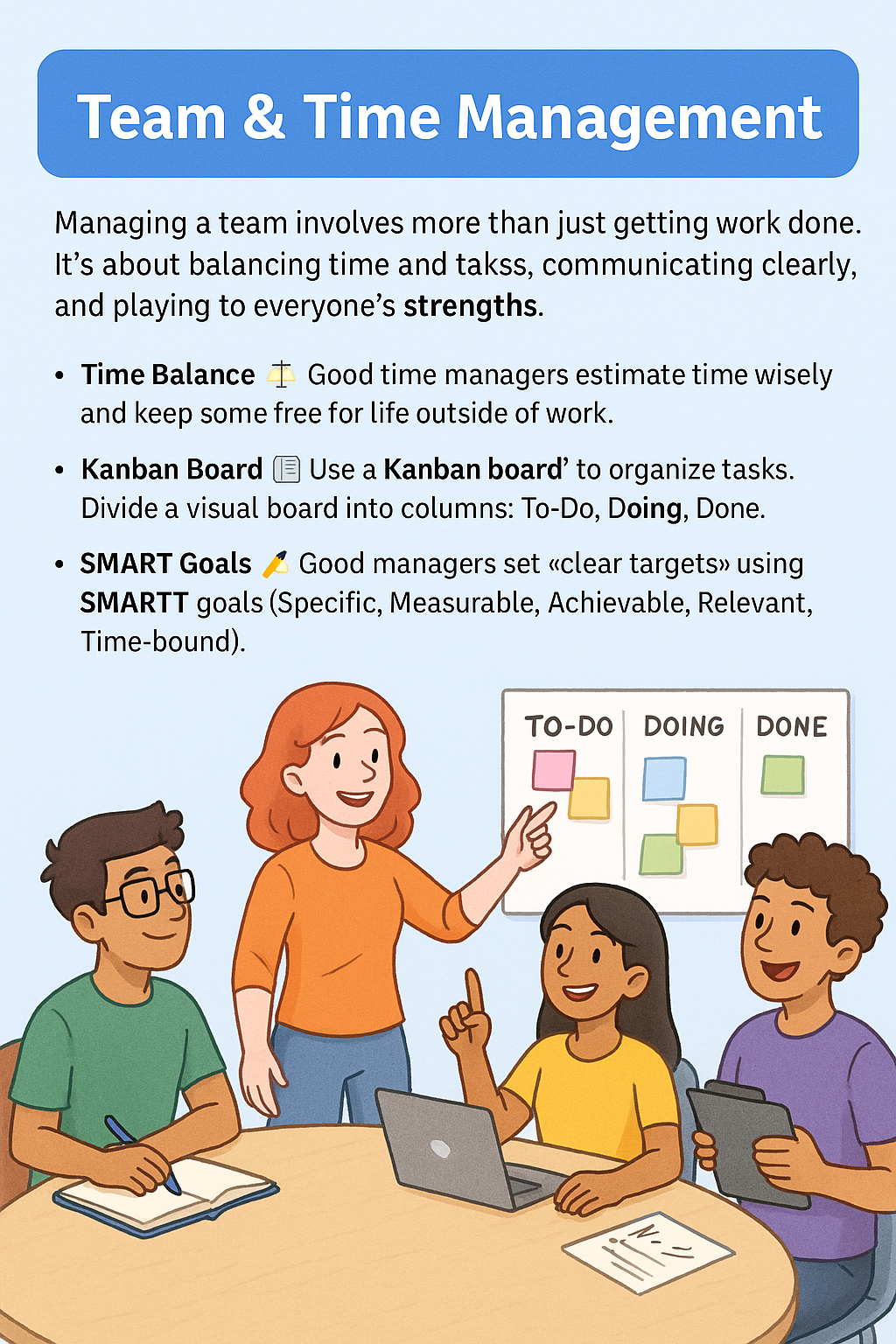
Teams work best when every member knows their strengths and supports others.
🗣 Communication Rules
Good communication is the heart of teamwork.
- Listen more than you speak.
- Give feedback about the task, not the person.
- Ask questions when something’s unclear.
- Celebrate progress, not just results.
Example: Giving Feedback
“Your design looks great. Maybe we can make the title bigger for clarity.”
is better than
“The design isn’t good.”
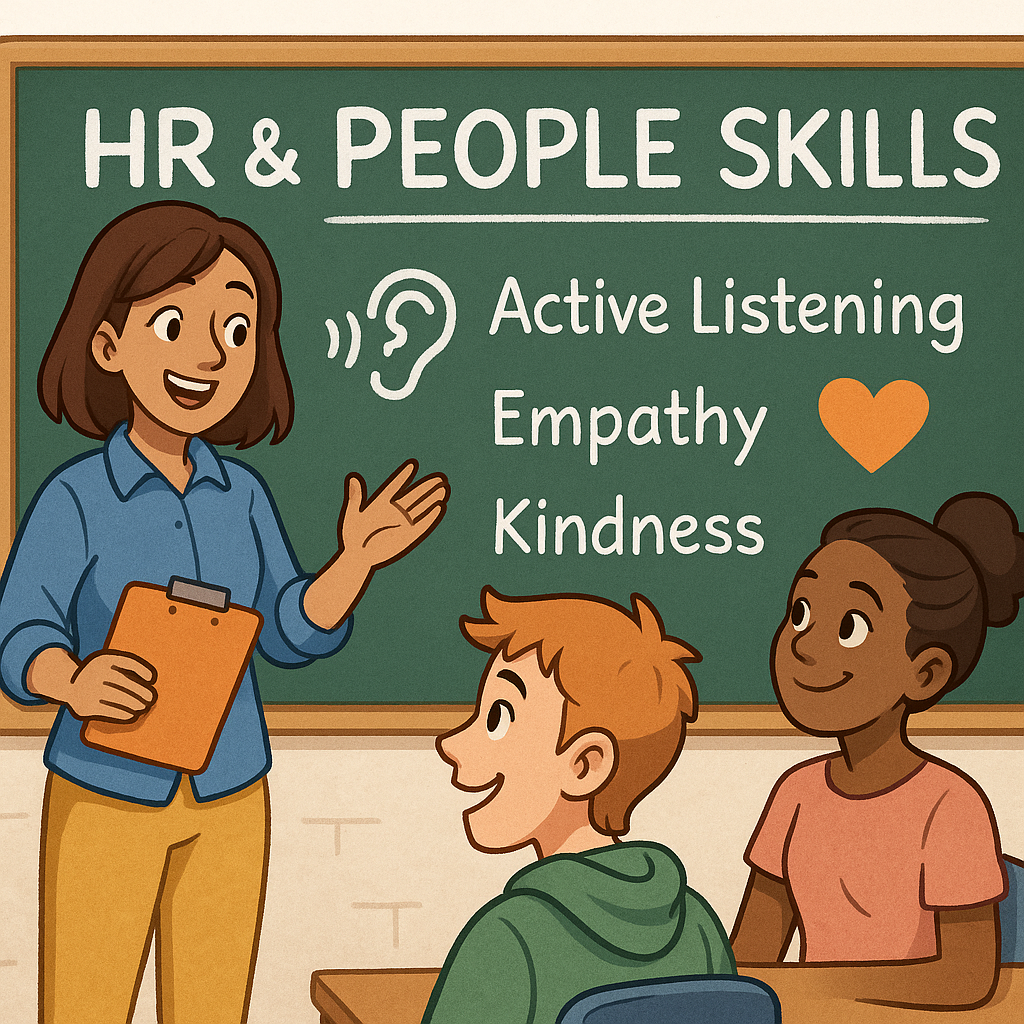
Listening deeply builds trust — it’s the real superpower in teamwork.
🎮 Mini Simulation: Team Challenge
Imagine this: your class must organize a school exhibition in 3 days.
You have:
- 3 students (you, Mia, Leo)
- Tasks: posters, invitations, setup
- Problems: printer broke, someone’s late, new teacher wants a speech
What do you do?
Option A: try to do everything yourself → exhaustion, stress.
Option B: assign roles and adjust plan → teamwork wins.
That’s what the Team Simulator will show you later — how choices affect results.
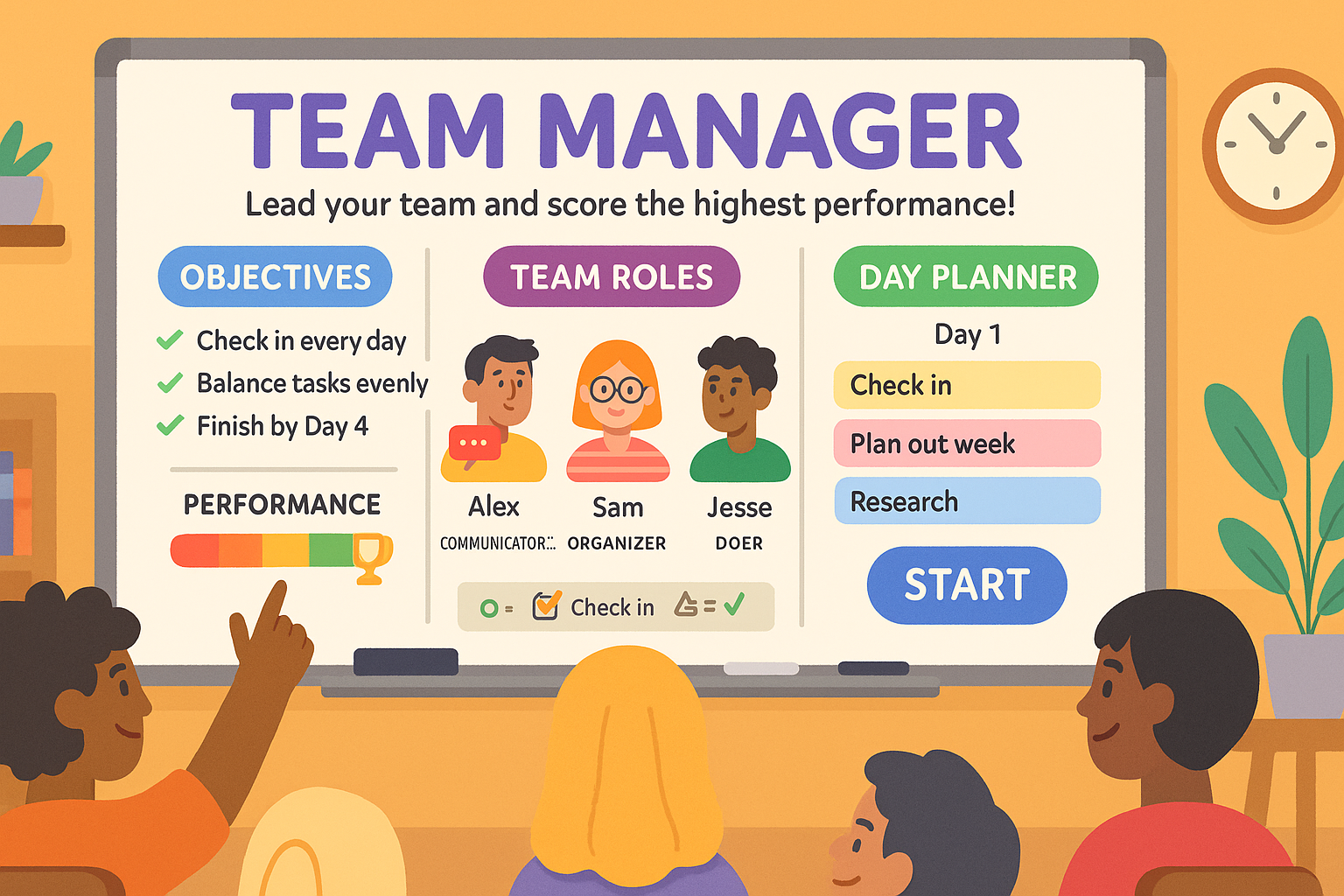
Every decision changes the team’s flow — leadership means guiding, not controlling.
🌿 Time Balance & Avoiding Burnout
Even great teams fail if they’re tired.
Rest is not a reward — it’s part of the system.
The “3 Priorities” Rule
Each morning, write your top three must-do tasks.
Then focus only on them — everything else can wait.
Quick Reset Ideas
- 5-minute walk outside
- Deep breathing for 1 minute
- Write one line of gratitude
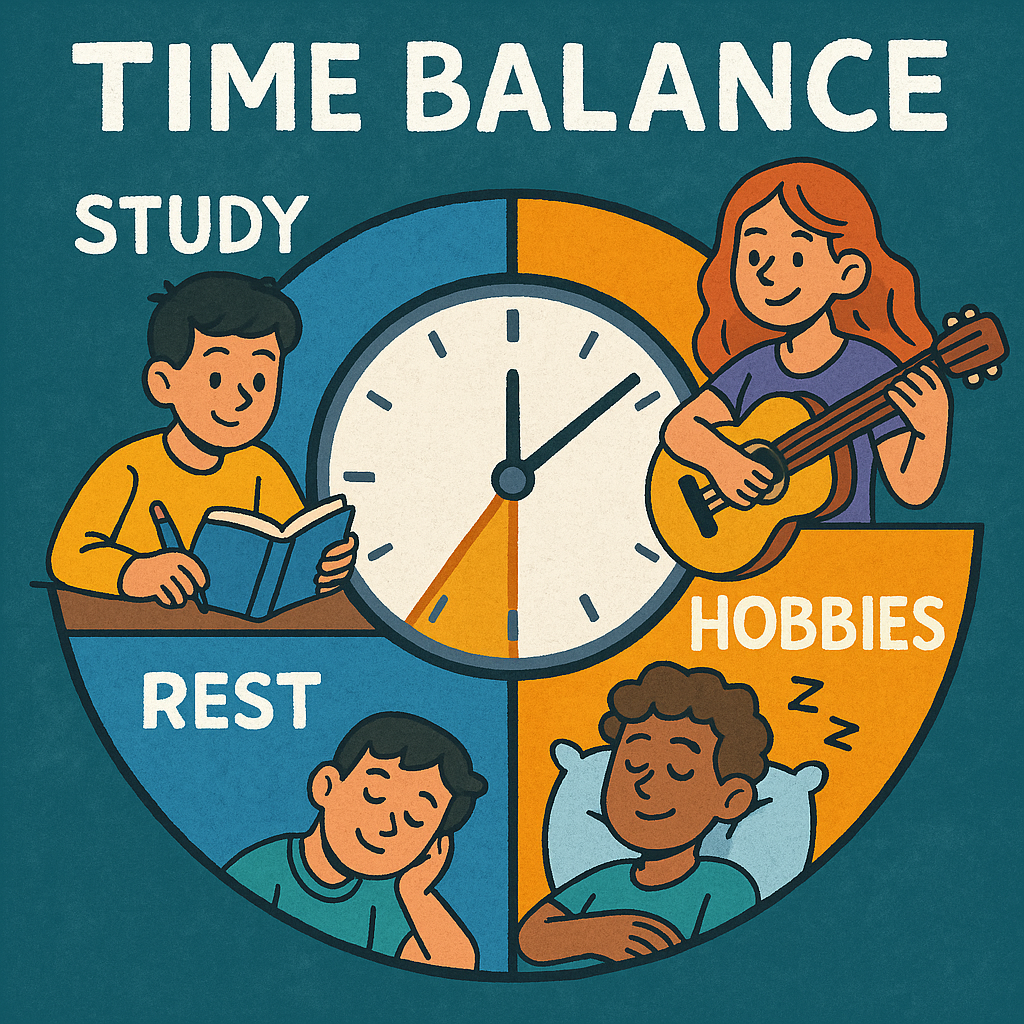
Balance keeps creativity alive — your mind works best when rested.
🗓 Practice: My Ideal Week
Plan your week like a pro.
| Block | Activity |
|---|---|
| Morning | Study or creative work |
| Afternoon | Group projects |
| Evening | Exercise, relax, or social time |
| Weekend | Review goals + recharge |
Add colors or emojis — make it yours!

Planning your week brings peace — it’s not control, it’s clarity.
🧭 Final Reflection
Time and teamwork are like the heartbeat of every project.
When you use them wisely, you lead with confidence — and make room for others to shine.
“Time management isn’t about saving minutes — it’s about giving meaning.”
Take what you’ve learned and test it in the Team Simulator — your next step to mastering leadership.
✅ Next Lesson
Next: HR & People Skills — discover how motivation, empathy, and fair rules make organizations thrive.
📝 Try this today
Write one SMART goal for your week and track your progress.
Identify your natural role in a team (leader, creator, organizer, motivator).
Plan your perfect week with time for learning, teamwork, and rest.
Lesson Progress
Module: marketing-management · +0% upon completion